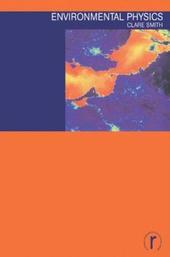
|
Environmental Physics
Hardback
Main Details
| Title |
Environmental Physics
|
| Authors and Contributors |
By (author) Claire Smith
|
| Series | Routledge Introductions to Environment: Environmental Science |
|---|
| Physical Properties |
| Format:Hardback | | Pages:320 | | Dimensions(mm): Height 246,Width 174 |
|
| Category/Genre | Physics
The environment |
|---|
| ISBN/Barcode |
9780415201902
|
| Classifications | Dewey:363.7 |
|---|
| Audience | | Undergraduate | | Postgraduate, Research & Scholarly | | Professional & Vocational | |
|---|
| Illustrations |
102 black & white illustrations, 102 black & white line drawings
|
|
Publishing Details |
| Publisher |
Taylor & Francis Ltd
|
| Imprint |
Routledge
|
| Publication Date |
19 July 2001 |
| Publication Country |
United Kingdom
|
Description
Many controversial environmental issues revolve around complex scientific arguments, which can be better understood with a grasp of the key scientific concepts. Environmental Physics provides an introduction to the physical principles that underlie environmental issues and shows how they contribute to the interdisciplinary field of environmental science as a whole. * The forces of nature - Newtonian mechanics, gravity, rotational dynamics and angular momentum, waves and electro-magnetism * Energy - efficiency and entropy, mechanical work, electrical energy, renewable energy, energy use in transport and energy in the biosphere * Heat and Radiation- transmission of heat, engines and thermal power production, radiation, the electromagnetic spectrum and remote sensing * Solids, Liquids and Gases - States of matter, properties of solids, seismic waves, pressure, fluids and fluid flow, hydrology and hydrogeology * The Earths climate and climate change - microclimates, the ozone layer, the 'Greenhouse effect', sea level change and climate modelling Sound and noise - sound waves, noise pollution and control * Radioactivity and nuclear physics - radioactive decay, nuclear fission reactions, radioactive waste disposal, nuclear fusion reactions These fundamental and applied concepts of physics are presented in a simple, easily comprehensible fashion, made relevant by their application to topical environmental issues. Environmental Physics makes the subject accessible to those with little or no previous knowledge of physics. The emphasis is on application rather than theory, so in many cases concepts are described qualitatively rather than quantitatively. As a student of environmental science, the reader will find the wide range of topics covered in a single volume invaluable. Environmental Physics is highly illustrated with over 100 figures and plates, and has boxed case studies, end of chapter summaries, further reading and a glossary.
|